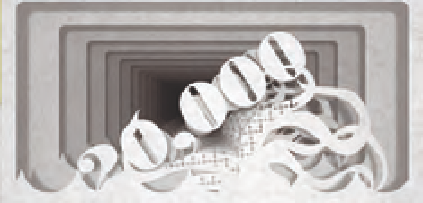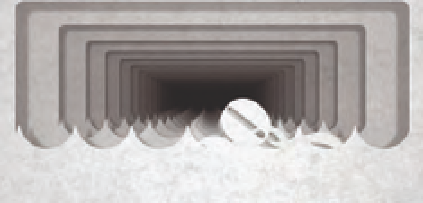Graphics Reference
In-Depth Information
Movement
A designer of a motion sequence establishes
the way that type and other visual elements
move. Behaviors can be regular, inconsistent,
or in-between, depending on the message.
This section provides preliminary
considerations for animating type and other
elements. More detailed information can
be found in the topic
The Illusion of Life:
Disney Animation
by Ollie Johnston and
Frank Thomas, which describes twelve basic
principles of animation, including how
objects move in space based on the laws of
physics, and guidelines for timing movement.
Direction.
There are many ways type
can move between two points, starting with
simple scrolling. Basic scrolls can move
type in a single line from right to left, like
the marquees featuring news headlines in
Times Square (Fig
9-22
), or from bottom to
top, like traditional film credits. In addition to
moving in horizontal and vertical directions,
type can also rotate or move diagonally. If a
three-dimensional space is established, type
may move forward, toward the viewer, from
a vanishing point in the background on the
z
-axis (Fig.
9-23
). This mimics movement in
physical space, similar to how a train comes
into view from down the track.
9-21
This title sequence for the documentary film
How Democracy Works Now
shows type layered
over still images and film footage, all moving at
different speeds. The moving layers give the illusion
of depth and communicate complexity. (Designer:
Level Design Group)
9-22
Scrolling type on a Times Square marquee
moves from right to left.
9-23
In this sequence, type comes toward the viewer
from a vanishing point, giving a sense of three-
dimensional space. (Designer: Jamie Carusi)











